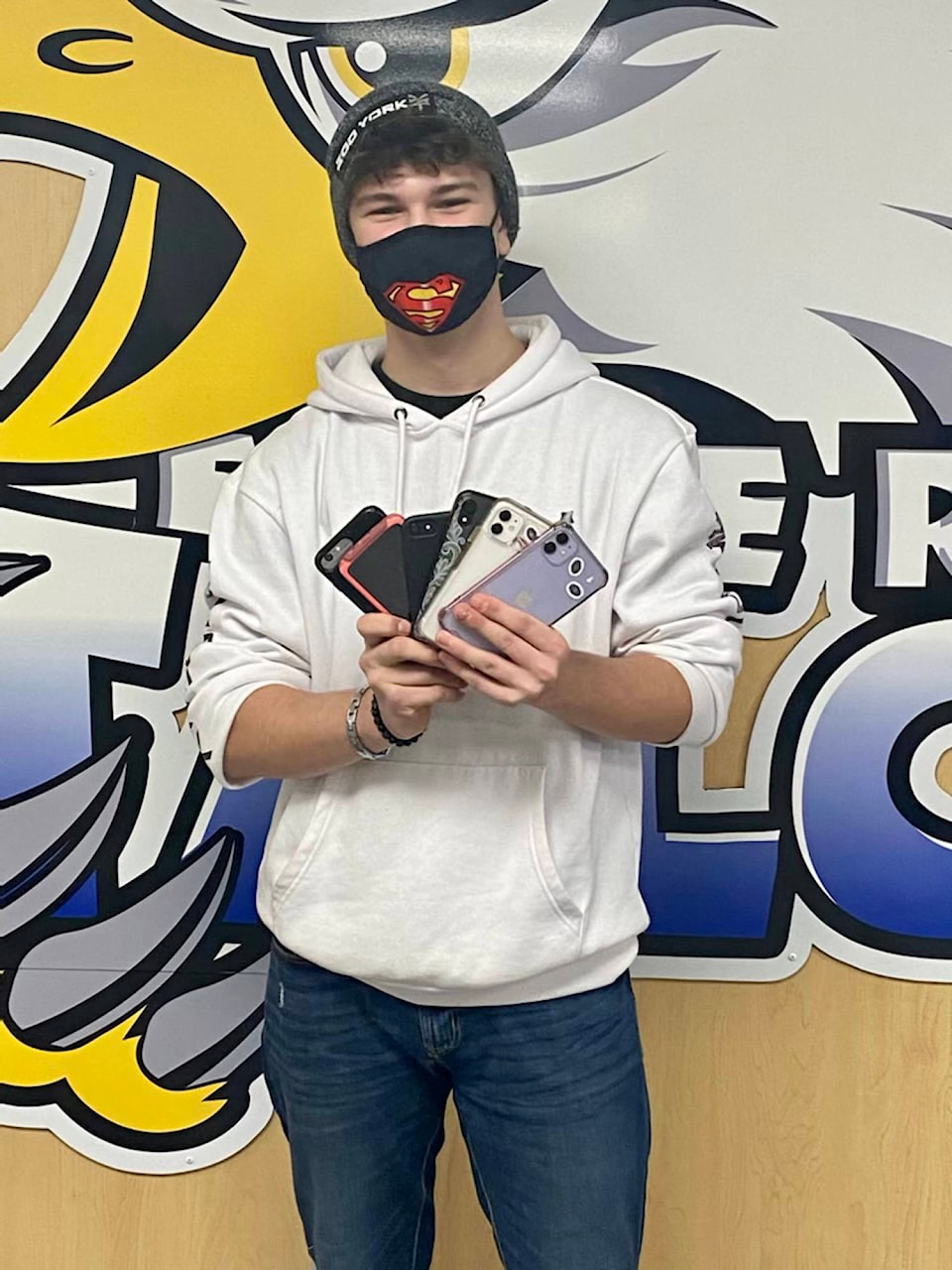Cody Hutchinson is optimistic he and fellow Eagle River Secondary students will be able to attend school for nine days straight without looking at a cell phone.
The Grade 9 student recently received a $500 grant through the McCreary Centre Society to conduct something of an experiment at the school – a Digital Detox Challenge.
From Feb. 1 to 11, at the start of each school day, participating students are required to sign in their cell phones at the school office. The phones must remain there, turned off, throughout the day. They cannot be used at breaks, and can only be signed out when students are ready to leave. Even if participants are at home for the day, they must not use their phones during school hours.
As an incentive, the grant money will go towards prizes to be won.
Hutchinson admits he uses his cell phone at school more than he’d like to, and that it’s a difficult behaviour to break. But he’s excited about giving it a go.
“I think it’s going to work out great,” said Hutchinson. “I think this is going to be awesome for our school. I think people are going to really like this.”
The challenge was prompted in part by social behaviours Hutchinson witnesses daily at school – students focused more on their phones outside of class instead of talking to one another in person.
“You see a lot of people walk around with their phones and phones are such a big part of our lives now and you don’t see too many people socializing as much…,” said Hutchinson. “It’s almost hard to talk to people because you never know if they have an earbud in their ear, a wireless earbud. Or, you know, you go to say something to somebody and you look over and you realize they’re staring right at their phone.”
Hutchinson shared his concerns with Principal Mark Marino and together they considered ways to disconnect students from their devices in order to reconnect with each other.
Inspired by a viewing of the The Social Dilemma, a documentary that explores the consequences of an increasing dependency on social media, Marino said he tried a similar experiment with a Grade 9 science class before Christmas. He asked students if they would be willing to give him their phones for the day.
“I think I had about 11 phones,” said Marino. “And what I noted at lunch that day is that kids were actually interacting in our commons area down below, playing air hockey and foosball, instead of five kids lined up on a bench, on their screens, which normally happens - in every school, not just here. And they’re probably snapchatting each other… the person right next to them.”
Read more:
Read more:
Part of the detox challenge involves a viewing of The Social Dilemma, as well as having conversations around mental health and alternative ways to connect.
“You want kids to recognize how much time they’re actually on their phone. You want kids to start self-regulating,” said Marino. “This is hopefully showing kids what it’s like without a phone. When you have some conversations with kids about their cell phones and the number of hours they’re on their phones, we have heard ranges of 10 to 18 hours a day… which is scary.”
Marino recognizes, especially with the COVID-19 pandemic and related restrictions, that devices play a role in staying connected outside of school. But for the same reason, he explained, it is important to make the most of opportunities during school days for in-person connections.
Hutchinson is hopeful the Digital Detox Challenge will show participants a correlation between minimal cell phone use, happiness and attention span.
“I hope that people will realize, ‘hey, I was a lot more into stuff when I was without my cell phone – I was more excited to do things… It was nice actually having a conversation,” said Hutchinson. “I hope people will take away from it that it’s helpful for their social life.”
Hutchinson also wouldn’t mind seeing other schools in School District 83 conduct their own digital detox events.
“That would be awesome – start a trend,” said Hutchinson.
Like us on and follow us on



